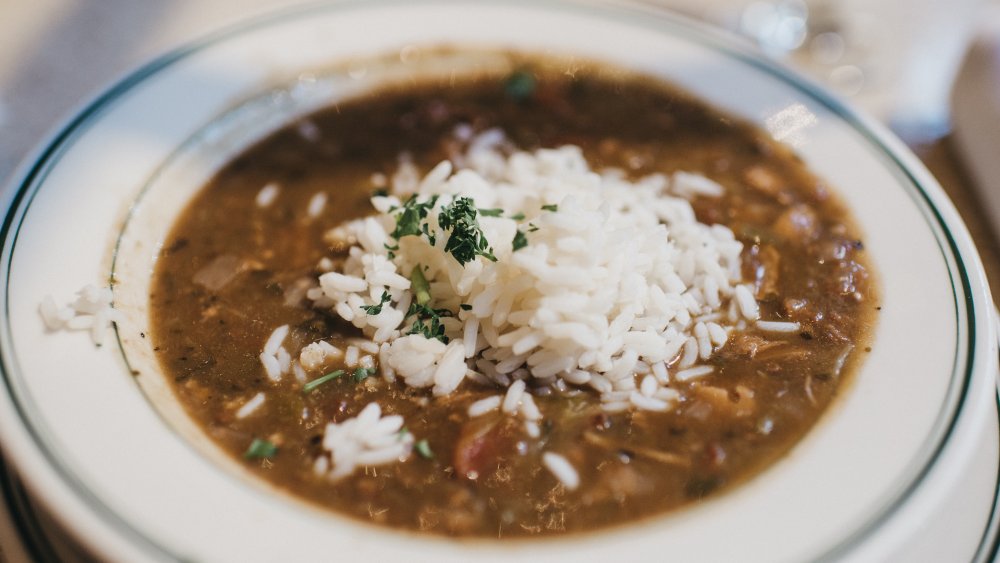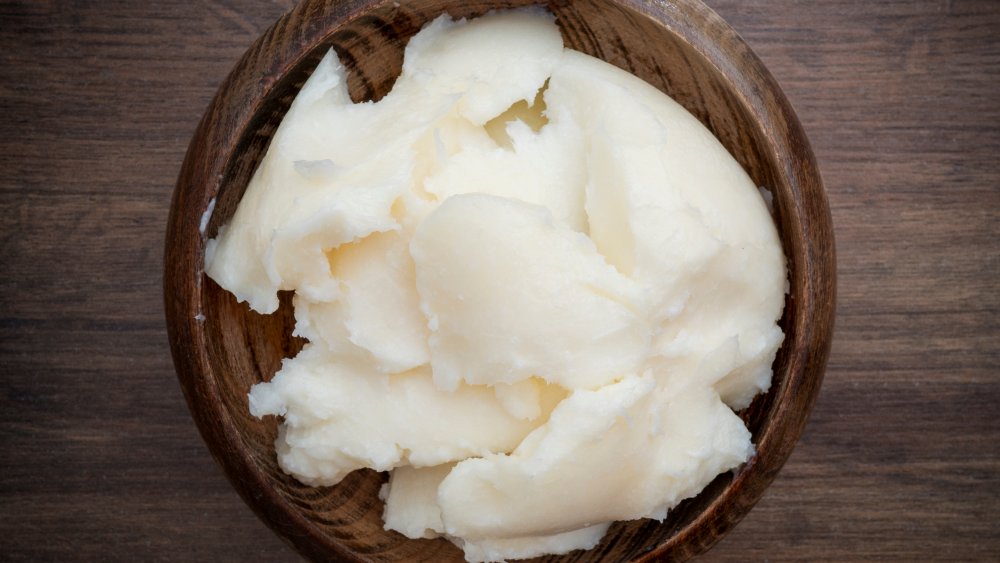The Secret Ingredient You Should Be Adding To Your Gumbo
Just a warning before we begin — your cardiologist isn't going to like this suggestion.
The basis of any gumbo is the roux. Roux is a mixture of fat and flour in equal parts that causes the stew to thicken and also adds color, flavor, and depth to the gumbo (via The Food Network).
Usually, oil or butter the most popular fat to use for a roux. However, some people use pork lard — rendered pork fat — as the base for their roux (via DIG). Doing so provides a number of benefits. For starters, lard has a high smoke point, so it allows the roux to darken, providing the end product with a deep and rich color without burning. It also adds a meaty, hearty pork flavor that using something like vegetable oil won't achieve.
But as with most things in life, there are some trade-offs, and in this case, it has to do with the health benefits or detriments of the fat product that you're using to create your roux.
The health impact of using lard in your gumbo
While lard contains some 40 percent saturated fat (which is less than butter's 54 percent), it's far less healthy than say, vegetable oil. A food science and human nutrition expert at Iowa State University, however, notes that it is healthier than Crisco, a partially hydrogenated vegetable shortening that was invented as a replacement for lard (via NPR). And if you make your roux with vegetable oil, it's likely going to have less than 10 percent saturated fat. On top of this, lard is most often hydrogenated to last on the shelf in the grocery store, which means it contains the much-reviled trans fat.
Even so, lard's popularity is taking off again, with a cookbook published in 2012 bearing the title "Lard: The Lost Art of Cooking with Your Grandmother's Secret Ingredient." Those lard proponents point out that lard contains about half monounsaturated fats, which are considered to be heart healthy.

